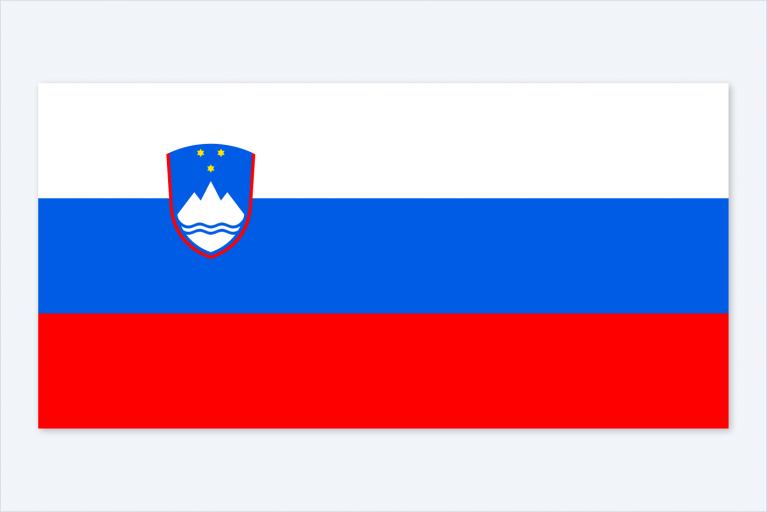
Capital: Ljubljana
Official EU language(s): Slovenian
EU Member State: since 1 May 2004
Currency: euro (€) Euro area member since 1 January 2007
Schengen: member since 21 December 2007
Figures:
- Geographical size: 20 273 km2
- Population: 2 116 792 (2023)
(Source: Eurostat - figures for geographical size and population)
Political system
Slovenia is a parliamentary democratic republic. The prime minister is the head of government. The president who is head of state is directly elected. The government holds executive and administrative authority. The prime minister and ministers are elected by the Parliament. Slovenia has no regions, but is subdivided into 212 municipalities.
Trade and economy
Slovenia’s GDP per capita of €31 900 ranks below the EU average (€35 500). It accounts for 0.3% of the EU's total GDP.
(Source: Eurostat - figures for GDP per capita and GDP)
(Source: Eurostat - figures for exports and imports)
There are 8 representatives from Slovenia in the European Parliament. Find out who these Members of the European Parliament are and follow the activities of the European Parliament’s office in Slovenia.
In the Council of the EU, national ministers meet regularly to adopt EU laws and coordinate policies. Representatives from the Slovenian government attend Council meetings focused on their area of responsibility several times a year.
The Council of the EU does not have a permanent, single-person president (like the Commission or Parliament). Instead, its work is led by the country holding the Council presidency, which rotates every 6 months.
During these 6 months, ministers from that country's government chair and help determine the agenda of Council meetings in the different policy areas, and facilitate dialogue with the other EU institutions.
Dates of Slovenian presidencies:
Jan-Jun 2008 | July-Dec 2021
The European Commissioner nominated by Slovenia is Janez Lenarčič, who is responsible for Crisis Management. The Commission is represented in each EU country by a local office, called a "representation". Find out more about the Commission's representation in Slovenia.
Slovenia has 7 representatives on the European Economic and Social Committee. This advisory body – representing employers, workers and other interest groups – is consulted on proposed laws, to get a better idea of the possible changes to work and social situations in different countries.
Slovenia has 7 representatives on the European Committee of the Regions, the EU's assembly of regional and local representatives. This advisory body is consulted on proposed laws, to ensure these laws take account of the perspective from each region of the EU.
Slovenia also communicates with the EU institutions through its permanent representation in Brussels. As Slovenia’s "embassy to the EU", its main task is to ensure that the country's interests and policies are heard and pursued as much as possible in the EU.
Budgets and funding
How much does Slovenia pay and receive from the EU?
The EU budget is the tool to ensure that Europe remains a democratic, peaceful, prosperous and competitive force. The EU uses it to finance its priorities and big projects that most individual EU countries could not finance on their own.
The benefits of EU membership significantly exceed the size of the EU budget contributions and the examples are many. All Member States benefit from being part of the Single Market, a shared approach to the common challenges of migration, terrorism and climate change, and concrete gains like better transport infrastructure, modernised and digitalised public services and cutting-edge medical treatment.
How much each EU country pays into the EU budget is calculated fairly. The larger your country's economy, the more it pays – and vice versa.
The EU budget is not about giving and taking – it’s about collectively contributing to making Europe and the world a better place for us all.
EU budget spending and revenue per country and per year
EU-funded projects in Slovenia
Money from the EU budget helps fund programmes and projects in all EU countries – for example to build roads, subsidise researchers and protect the environment.
Find out more about how Slovenia benefits from EU funding and recovery funds in your country or region.

